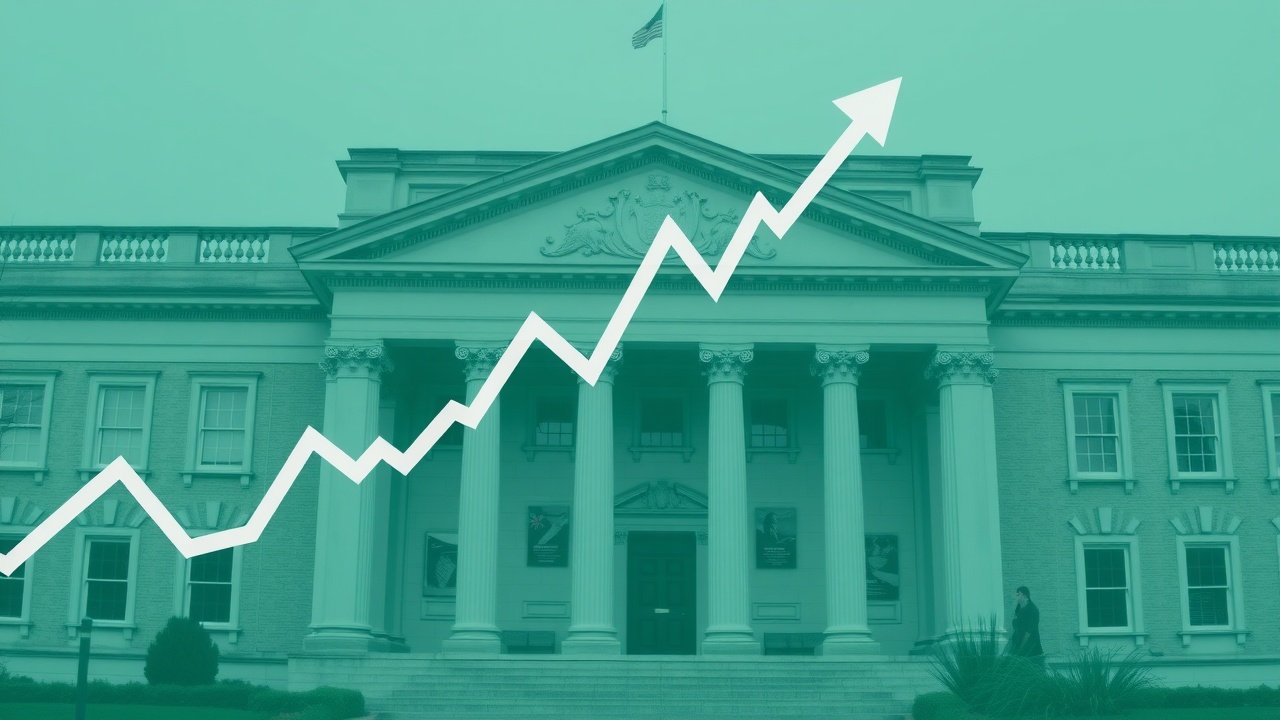
"The infrastructure sector offers a compelling blend of security, returns, and long-term opportunities," says James Mackreides, citing the boom in construction in emerging markets as well as the digital and green transitions
In recent months, investors have had to negotiate a turbulent time. Global markets have mostly recovered from the volatility brought on by Donald Trump, but there is still a lot of uncertainty. Infrastructure deserves consideration for those looking for a more secure yet lucrative home for their money with room to grow. According to Steven Kibbel, chief editorial adviser and financial planner at Gold IRA Companies, it is frequently regarded as a "shock absorber when wider markets turn volatile." However, according to Emily Foshag, manager of the Principal Asset Management Global Listed Infrastructure Fund, the industry enjoys "strong fundamentals" and listed funds and companies seem attractively valued, both historically and in comparison to global equities.
Infrastructure demand is driven by emerging markets.
Chief revenue officer Varun Jain of index provider BITA claims that strong economic growth in emerging markets, which has outpaced that of developed countries for decades, is a "massive" factor driving demand for infrastructure. Over half of global economic growth currently comes from these economies, and by 2035, that percentage is expected to rise to 65%. SandP Global Market Intelligence predicts an average annual growth rate of about 4% over the next ten years, compared to 1.6 percent for developed economies. By 2035, infrastructure spending in Asia, Latin America, and Africa is expected to reach £62.5 trillion.
According to Thuy Quynh Dang, portfolio manager of Cohen & Steers' Global Listed Infrastructure Fund, this growth is particularly anticipated to spur infrastructure investment in urban centers as rural populations move to cities. Growing living standards will also increase demand for improved services, such as faster broadband, dependable roads, and water supplies. Furthermore, as travel abroad becomes more accessible, the growing middle class in emerging markets will fuel demand for airport infrastructure.
Quynh Dang asserts that it is more difficult to capitalize on the infrastructure boom in emerging markets. Utility operators are subject to restrictions in many emerging countries, and increased political unrest raises asset risk. Another obstacle for investors who prefer direct stock market investment over funds is the small number of listed emerging-market utilities, which currently make up only 15% of the listed infrastructure market.
However, according to Quynh Dang, this is changing as governments in emerging markets "increasingly look to attract foreign private investment," which results in utilities having more transparent regulatory frameworks "in order to increase their attractiveness to foreign capital." As a result of this recent development, investors can now make direct investments "in everything from ports in Brazil to airports in Mexico and Thailand." She believes that emerging-market infrastructure companies will soon account for a much larger share of the market due to an increasing pipeline of flotations.
Developed countries are rebuilding.
In developed economies, spending on infrastructure is also expected to rise significantly. According to Vincent Gerritsen, head of private markets for the UK and Europe at Morrison & Co., many Western governments, including the UK and many European countries, have spent less on infrastructure in an effort to lower their deficits over the past 15 years. This strategy has led to insufficient maintenance of legacy infrastructure, even though it may have provided temporary financial relief.
This neglect's effects are becoming more noticeable. Gerritsen says, "It's brought home to me every day when I virtually have to slalom through London's potholes." The recent blackouts in Portugal and Spain are also not surprising, according to GraniteShares CEO William Rhind, who notes that "one third of electricity grids in Europe are over 40 years old." As a result, Jain observes that there is growing agreement that infrastructure in many developed nations requires an immediate "reboot" in order to support economic growth.
The fact that so many countries are realizing the ineffectiveness of previous austerity measures and are attempting to reverse this is encouraging. Jain cites the 2 billion modernization of Gatwick Airport in the UK as evidence that public-private partnerships, in which governments work with private operators on asset construction with long-term operating contracts, provide one solution.
Another tactic is to sell older assets to private companies in order to raise money for the construction of more contemporary infrastructure.
Nonetheless, some nations are taking a more straightforward fiscal stance. Germany is unique in that it has revised its long-standing debt-break regulations, mainly to increase defense spending, while also setting up an additional 500 billion in budgetary funds for infrastructure spending. According to JM Finns' investment office head Jon Cunliffe, even bond rating agencies, which are generally leery of increased spending, praised the move as good for Germany's competitiveness.
New demands are created by digitalization.
According to David Bloom, chairman of data center company Kao Data, the growth of the digital economy, which "cuts across various sectors and is significantly dependent on infrastructure," will further drive infrastructure spending in addition to the need to upgrade aging infrastructure in developed countries and the expansion of emerging markets. There is a significant need for foundational infrastructure, including data centers and telecommunication networks, as a result of the acceleration of digitalization. This creates a "virtuous circle" in which "strong digital infrastructure drives economic expansion," which in turn increases the need for infrastructure, according to Kao.
Richard Sem of the Pantheon global infrastructure and real assets investment team says that data centerswhich store, process, and distribute dataare the fundamental building blocks of the digital revolution. They were already profiting from the expansion of cloud computing and mobile gaming prior to the development of artificial intelligence. However, demand has increased even more as a result of businesses spending billions on creating complex computer models.
In addition to hardware and physical structures, data centers need a significant amount of energy. Sem observes that data centers' electricity usage "has shot through the roof" alone. The predicted energy demands are so high, in fact, that a number of nations are thinking about adopting Ireland's strategy, which "has effectively banned them from the national grid, forcing them to provide their own power." Rhind observes that "in some parts of Europe it takes up to three years for them to be connected to the grid," meaning that many data centers have few other options. This opens up possibilities for facilities that generate electricity and are connected to data centers.
But Ben Pritchard, CEO of AVK, a data center power supplier, says that the "exponential growth" in demand for power is not just due to AI and cloud computing. The so-called "internet of things," in which devices are connected to one another, will also increase the demand for power and necessitate investments in digital infrastructure. The complexity of the situation is increased by the growing "expectation that this growth must be achieved sustainably."
The shift to clean energy.
Digital infrastructure is only one aspect of the need for sustainability. Although Charlie Wright, co-lead investment manager for Foresight Environmental Infrastructure, acknowledges that the Trump administration's resistance and some governments' reversal of carbon-emission reduction targets may make the shift to clean energy "a little slower than wed like," he maintains that "the overall move to a greener and more sustainable economy is impossible to dispute."
It will take more than just switching to renewable energy sources to replace fossil fuels. "Over the last ten years, it has become evident that updating the grid infrastructure is also necessary to accommodate the new energy production model," Wright notes. The electrical grids of many nations will need to be redesigned "from ones that are built around large-scale power generators to those that serve a collection of smaller-scale wind and solar farms." Around 1,500GW of renewable energy projects were estimated by the International Energy Agency in 2023 to be ready for grid connection. The agency also cautioned that in order to have any chance of keeping global warming to 1.5 degrees Celsius by 2030, annual global investment in power grids would need to double to £600 billion.
Offshore infrastructure investment is a component of the energy transition. Offshore wind already accounts for a sizeable amount of renewable energy production in nations like the UK, according to Colin Ross, chief strategy officer of subsea technology specialist Ashtead Technology. With significant investments from countries like Taiwan, offshore wind capacity is increasing by about 30% a year. When the wind turbines reach the end of their life, all of this "will need to be installed, maintained, and eventually decommissioned," according to Ross. It will also be necessary to decommission and remove legacy oil and gas infrastructure.
All things considered, the green transition calls for investments in a variety of areas, from improving energy storage and constructing renewable plants to modernizing grid connections. Nick Langley, a portfolio manager at ClearBridge Investments, says that "two electric cars use the same amount of electric power as a house" to get a sense of its magnitude. To reach net-zero goals, Langley's team predicts that "enormous sums" of up to £100 trillion will need to be invested over the course of the next 25 years. It's true that "some think tanks estimate that even more will need to be spent".
Infrastructure as a method of defense.
Infrastructure investment can be made through two main channels: businesses that produce and install assets, as well as those that own and run them. The latter is preferred, especially by more cautious investors, according to Jags Walia, head of global listed infrastructure at Van Lanschot Kempen Investment Management. This preference results from asset operators' usually long-term contracts, which offer more assurance about their cash flows. At a time when even nations like the United States are experiencing "a much less predictable business environment," such stability is especially beneficial.
In contrast, Walia notes that businesses that "come around and deliver a new screwdriver for an infrastructure project and then go away again" are more dependent on market supply and demand dynamics and competition, which increases their income uncertainty. Making them less appealing and riskier investments, many executives at engineering and manufacturing companies "are wondering whether the supply chains of their firms are going to be hit by yet another round of tariffs and trade restrictions."
The majority of infrastructure operators are natural monopolies with strong pricing power, allowing them to pass cost increases on to customers, according to Emily Foshag, who largely agrees. The majority of regulatory agreements worldwide contain mechanisms for modifying consumer prices to reflect changes in inflation, even though such "core infrastructure" is usually subject to strict regulations. Despite her strong preference for operators over manufacturers or installers, Foshag thinks that the "structural tailwinds" driving demand for infrastructure will benefit all market segments, making it a less risky investment than those in other industries. In the medium term, "the energy transition, demographic shifts, digitalization," and technological innovation are all expected to continue "regardless of what happens in the wider economy." See below for the best strategies for leveraging this theme.
Consider making an investment in infrastructure right away.
Take a look at the iShares Global Infrastructure UCITS ETF (LSE: INFR) for simple exposure to the infrastructure industry. The largest listed infrastructure companies worldwide are the focus of this exchange-traded fund, which tracks the FTSE Global Core Infrastructure index.
Along with energy and industrial businesses and real estate investment trusts, utilities make up about half of the portfolio. Pipeline operator Enbridge Inc. (NYSE: ENB) and US and Canadian renewables company NextEra Energy (NYSE: NEE) are among the top holdings. The price-to-earnings ratio of the portfolio is 18%, while the total expense ratio is 065%.
Another option is the Kempen (Lux) Global Listed Infrastructure Fund, which is actively managed. Jags Walia is in charge of it, and it focuses on publicly traded companies that make at least 70% of their revenue from running infrastructure assets. In order to provide greater resilience against economic downturns, the fund gives preference to companies with inflation-linked contracts and comparatively short capital-expenditure cycles. The fund has beaten its benchmark, the FTSE Global Core Infrastructure 50/50 index, since it was launched in 2019. The continuous fee is one percent.
With a diverse portfolio of premium global infrastructure assets spread across North America, the United Kingdom, and Europe, Pantheon Infrastructure (LSE: PINT) is an investment trust. The holdings include a data center company in North America, NGGT, which owns and runs the regulated national gas transmission system in the United Kingdom, and an independent gas metering company. With a dividend yield of 3.6 percent and an ongoing charge of 1.31%, Pantheon is trading at a 16.9% discount to its net asset value.
Foresight Environmental Infrastructure is another notable investment trust (LSE: FGEN). Foresight, which presently owns 41 assets with a combined capacity of 359 point 5 MW, focuses on clean energy and decarbonization infrastructure projects in the UK and mainland Europe. While wind, waste, and bioenergy make up the majority of its investments, it also has solar energy and anaerobic waste projects, charging stations, hydropower, and sustainable agriculture. In addition to trading at a discount of about one-third to its net asset value, Foresight offers an alluring dividend yield of 10.6%.
Sacyr SA is a good option for exposure to a single company (Madrid: SCYR). Infrastructure development, infrastructure operation, and desalinationa critical field in light of the growing global water shortageare Sacyr's three primary business segments. The company works on a variety of projects, such as building airports and toll roads. Despite having its headquarters in Madrid, the company is the second-largest construction company in the region and makes the majority of its money in Latin America, especially in Chile and Colombia. At 13:01 times its projected 2026 earnings, it is currently trading at a 3:07 dividend yield.
Another business that stands to gain from the increased focus on energy security and decarbonization is Ashtead Technology Holdings (LSE: AT). (). In order to support offshore wind and oil and gas projects worldwide, including the decommissioning of outdated oil and gas rigs, Ashtead supplies and leases equipment to the offshore energy sector. With returns on capital employed of about 15 percent, the company has more than tripled its revenue between 2019 and 2024 by leveraging its strength in this specialized but crucial sector. Despite forecasts of sustained robust growth, Ashtead is currently trading at a low 9.5 times its projected 2026 earnings.














Leave a comment on: In times of market turbulence, infrastructure investing offers a refuge of steady growth